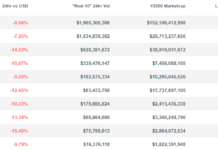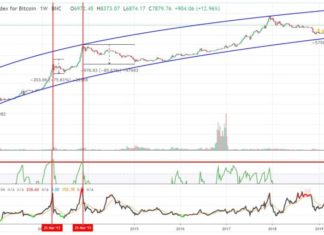[ad_1]
Bitfinex recently moved toward “Tether neutrality,” breaking its special bond with Tether (wherein it was the most reliable way to redeem USDT for USD) and in turn, Tether, with nearly $2 billion it outstanding units, had to re-establish direct redemption for USDT holders to USD. Those still wanting to use the Bitfinex method will have to trade at normal rates, which are frequently not-quite-pegged to the dollar.

Well, fine. But here’s the problem: Tether’s fees and limits are sort of outrageous, especially compared to its much more recent competitors. Paxos Standard (PAX) has no redemption fee but a minimum of $100. The same with Circle’s USD Coin (USDC). But Tether? Well, to even consider redeeming your USDT for USD with Tether proper, you’ll need to be doing it $100,000 at a time. You’ll pay a minimum fee of 0.1% to make a deposit and acquire USDT, and there are three tiers of withdrawal fees: 0.4% at $100,000 or more, 1% at $1 million or more, and 3% at $10 million or more.
These fees are not inconsequential, and the size limits mean that primarily large operations like crypto exchanges will be using them. After all, $100,000 only goes into $1.8 billion 1800 times. $1.8 billion is roughly the size of the USDT market at the time of writing. Additionally, clients are only allowed to make conversions and transactions once per week, while Paxos at least has a daily schedule of when transactions are processed.
The move is non-competitive. It puts both Paxos and USD Coin in a stronger position, and each has been steadily growing. Gemini Dollar (GUSD) is mainly used on its issuing exchange, Gemini, so I leave it out of this article. However, it’s notable that GUSD has much friendlier fees and rates as well.
At the time of writing, both PAX and USDC were trading 1% above their peg – meaning that you could effectively, at scale at least, earn a profit just exchanging either of them to dollars. Erstwhile, USDT was at $0.996, meaning you would take a loss converting them outside of the Tether one-for-one program, such as going to Bitfinex.
The situation raises an important question: is Tether intentionally trying to weaken its position and effectively price itself out of business? Shifting tides have shown that exchanges will lend their loyalty to whichever stablecoin clients most want. Binance and Bitfinex have both diversified their stablecoin offerings, and if market movement is any indicator, the positions of USDC and PAX will improve there while USDT will stagnate or decrease.
Is this all part of an exit strategy on the part of Tether, or will they find a way to compete with the low-and-no fee situation that PAX and USDC have going on? Time will tell, but in the meantime, this author can’t recommend the purchase of USDT unless absolutely necessary. It seems without large volumes you’ll have to take severe losses just to realize any gains or advantages that might have been had through holding it.
Disclaimer: The views expressed in the article are solely those of the author and do not represent those of, nor should they be attributed to, CCN.
Featured Image from Shutterstock
Get Exclusive Crypto Analysis by Professional Traders and Investors on Hacked.com. Sign up now and get the first month for free. Click here.
[ad_2]
Source link





